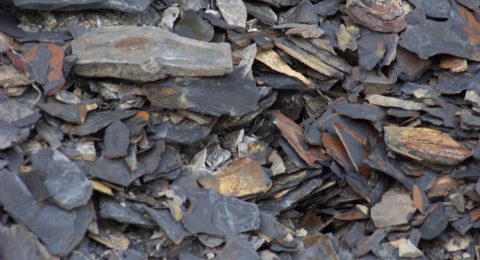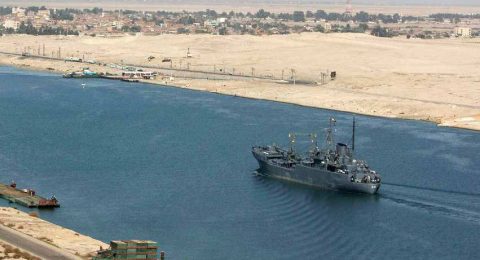Halliburton is more than just a global oilfield services company that provides advanced solutions to the oil and gas industry. Its fascinating history reveals a continuous focus on innovation and expansion that began with the company’s indomitable founder, Erle P. Halliburton.
Erle, a farm boy from Tennessee, had his first contact with the oil field in 1916 when he took a job driving a truck for the Perkins Oil Well Cementing Company, owned by Almond A. Perkins. At the time, the cementing of oil wells was still in its infancy.
Erle began to seek improvements in the way things were done, but Perkins always overruled his ideas and eventually fired him. Upon departing, Erle is said to have boasted: “Someday, I will come back and buy you out!” (He did in 1940.)
Without money or a job, Erle and his wife Vida left California in 1919 and went to Wichita Falls, Texas, near the booming Burkburnett Field. After scouting for work among the drilling crews, he made his first deal: He borrowed a wagon and mule team from a neighbor, in return for letting the man share his outdoor privy. Then he borrowed a pump, built a mixing box of two-by-twelve, boards and announced he was in the oilwell cementing business with a “new and improved method.”
At first, most operators and drillers were so busy making money that they largely ignored new technology of any kind. To raise capital, Erle turned to four friends who put in $250 each for a half interest in the business. Thus, in 1919, the New Method Oil Well Cementing Company was born.
Seeking to capitalize on several booming Oklahoma oil fields, Erle moved the company across the Red River to Wilson, Oklahoma. His first big opportunity soon followed. In 1920, Erle successfully performed a job for Skelly Oil Company and was able to buy his first cementing wagon and hire several full-time employees – including the neighbor from whom he had borrowed the mules.
Ever the visionary, Erle made continual improvements in the quality of his services through his own inventions. By the end of 1920, he owned and operated three cementing wagons, held a patent on his revolutionary Jet Mixer and had gained experience working on some 500 wells.
To provide a supply base and a machine shop, Erle moved once again – this time to Duncan, Oklahoma – in 1921. By mid-1922, the company had cemented more than 400 wells in the field. By 1923, Erle was operating 20 cementing trucks, and the company was branching out rapidly as new mid-continent fields were discovered. Erle’s business was booming.
On July 1, 1924, the 5-year-old company took a major step and incorporated as the Halliburton Oil Well Cementing Company (HOWCO), with nearly 60 employees. By selling minority stock interests to seven oil producers, Erle raised $130,000 – a large sum in those days – and immediately began to purchase new equipment, make other capital improvements, and seek new methods and services.
HOWCO established, in January 1930, its first research laboratories, where the company tested cement mixes. In 1932, the laboratory helped manufacture HOWCO’s new floating equipment: guide shoes and float collars. By then, HOWCO had four branches that covered oil activities in seven states.
The company began to offer other services in addition to cementing. In 1932, HOWCO bought a drillstem testing company that Erle had begun as a separate organization. Two years later, the company began offering acidizing services, developed in the Duncan laboratories, to break down the resistance of limestone formations and to increase the production of oil and gas.
HOWCO took the initial steps toward becoming a worldwide company in 1926: It sold five cementing units to an English company in Burma, and Erle sent his brothers, Paul and George, and two steam-powered trucks to Turner Valley in Alberta, Canada. They operated in Canada as Halliburton Oil Well Cementing Co. Ltd. until the company became a subsidiary of HOWCO in 1948.
In 1938, HOWCO performed its first offshore cementing job using a barge-mounted cementing unit at a rig in the Creole Field in the Gulf of Mexico. This was the beginning of what was to become the world’s most extensive offshore service.
HOWCO’s first full-fledged foreign operation, however, began in Venezuela in 1940, and many of its future executives did tours of service there before returning to the U.S. By 1946, the company had expanded into Colombia, Ecuador and Peru. HOWCO entered the Middle East that same year, performing services for the Arabian-American Oil Company, the forerunner of ARAMCO.
Several significant events impacted HOWCO in the late 1940s. First, in 1947, Erle was forced by ill health to step down as president of the company. He was succeeded by his brother John, who served as president until 1950.
Then, HOWCO stock was initially listed on the New York Stock Exchange on Sept. 9, 1948. The listing considerably broadened the company’s shareholder base and greatly increased its ability to raise capital for expansion.
And, in early 1949, Stanolind Oil and Gas Company, a unit of Standard Oil Company (Indiana), known today as the Amoco Corporation, granted HOWCO an exclusive license for the Hydrafrac process, which stimulated the production of oil and gas from older wells by hydraulically fracturing the formations. Eventually, the license expired and Hydrafrac became available to the entire service industry, but it made a significant contribution to HOWCO’s growth over the years.
As HOWCO entered the 1950s, the company grew almost nonstop. Its facilities in Duncan were expanding rapidly: a 52,500-square-foot machine shop was completed in 1955, and a three-story addition was built to the Technical Center, which housed research and engineering activities. The remarkable HT-400™ pump, which became a mainstay in field operations for years, was introduced in 1957.
The company continued to make inroads internationally, as well. In 1951, HOWCO made its first appearance in Europe as Halliburton Italiana SpA., a wholly owned subsidiary in Italy. In the next seven years, HOWCO launched Halliburton Company Germany GmbH, set up operations in Argentina and established a subsidiary in England.
In 1957, HOWCO purchased Welex Inc., a Houston company that provided electric well logging and jet perforating services. Then, in 1959, the company bought Otis Engineering Corporation, a Dallas firm offering specialized equipment and services for the completion, production and control of oil and gas wells.
For all of his accomplishments, Erle Halliburton was inducted into the Oklahoma Hall of Fame in 1953, just two years after his wife’s death. Four years later, on Oct. 13, 1957, Erle died in California after an extended illness. At the time of Erle’s death, HOWCO had revenues of $194 million and more than 10,000 employees.
In 1960, shareholders approved a new name – Halliburton Company – which was believed to more appropriately reflect the diversified services and products offered to the company’s customers. In August 1961, Halliburton moved its corporate headquarters from Duncan, Oklahoma, to Dallas, Texas.
In December 1962, Halliburton purchased Brown & Root Inc., a company started – also in 1919 – by brothers Herman and George Brown. It also purchased Southwestern Pipe Inc., Joe D. Hughes Inc. and Highlands Insurance Company. The price for these acquisitions was $33.2 million in cash and 103,349 shares of treasury stock, a total of $38,538,000.
In 1967, Halliburton established Halliburton Services as an operating division, incorporating most of the activities previously linked with HOWCO. Halliburton Services developed new cements, additives and tools to help customers drill and complete “difficult” wells – those drilled in deep water, on the Alaskan North Slope and in geothermal wells.
In 1969, when Halliburton Services and Brown & Root both reached their 50th birthdays, Halliburton Company celebrated by becoming a billion-dollar corporation for the first time.
The 1970s brought incredible changes – and restored the faster growth patterns that Halliburton Company had known in its earlier years. Revenues, which had been just over a billion at the start of the decade, were to multiply sevenfold – to just over $7 billion by 1979.
After OPEC used its economic power to lift oil prices out of the doldrums in which they had drifted for years, it seems that everybody wanted to be in the energy business. Old fields, once uneconomic to produce, were being worked over and re-explored. Halliburton was in the forefront of developing new methods – such as secondary and tertiary recovery – to get more oil and gas out of the reservoir.
In 1975, the U.S. petroleum industry drilled more than 40,000 wells for the first time in a decade; in 1980, it would drill more than 71,500 wells, and, in the following year, the industry drilled 91,600 wells. These were good times, indeed, for Halliburton and other service companies.
The downturn in oil prices that began in the early to mid-1980s wreaked havoc on all segments of the U.S. petroleum industry. The Halliburton Company workforce went from a peak of nearly 115,000 in late 1981 to less than 47,000 in 1986.
Despite all the gut-wrenching decisions forced upon the company’s management and its workforce, the 1980s produced magnificent accomplishments. Many of the company’s customers, after slashing their own technical staffs, began to lean heavily on Halliburton-developed technologies.
Halliburton Services had just opened a state-of-the-art Research Center in Duncan in 1980 and was busy developing a host of new services and technical improvements for its customers. A decade later, the company opened a center in the Netherlands to provide specialized services for customers in Europe and the North Sea. And, in 1984, Halliburton Company opened the doors of its Information Services Center in Arlington, Texas, forging voice and data links between all of the company’s units, wherever they were located around the globe.
Also in 1984, Halliburton provided all of the well completion equipment for the first multiwell platform offshore China. Two years later, Halliburton became the first American company to perform an oilfield service job on the China mainland.
The final decade of the 20th century brought more changes and growth to Halliburton. The company opened a branch office in Moscow in 1991. Two years later, Halliburton combined its 10 semi¬autonomous energy services units into one unified, global organization, Halliburton Energy Services. This served to meet the changing needs of worldwide customers in an industry where adaptability, efficiency, technology and economy make the difference.
In 1998, Halliburton merged with Dresser Industries, a major provider of integrated services and project management for the oil and gas industry. With this merger, Halliburton also gained the expertise of M.W. Kellogg, a petroleum refining and petrochemical processing company that Dresser acquired in 1988.
Since the merger, Halliburton has integrated Dresser’s well-known and respected brands such as Sperry-Sun Drilling Services, Baroid Drilling Fluids and Security DBS, and divested the Dresser Equipment Group.
In March 2002, Halliburton separated its business groups into two wholly owned operating subsidiaries: the Energy Services Group (ESG), and KBR, the engineering and construction group.
The Energy Services Group offers one of the world’s broadest arrays of products, services and integrated solutions for oil and gas exploration, development and production. It includes Halliburton Energy Services; Landmark, which provides software solutions and consulting services; and the joint venture companies Enventure and WellDynamics.
Halliburton saw record-setting earnings in 2005 and 2006, and added 12,000 new employees last year. Halliburton also announced its plans to separate from KBR; the first steps of the process took place in November 2006 when KBR launched its initial public offering. Also in 2006, Halliburton opened a new technology center, including a world-class laboratory, in Pune, India. In addition, Halliburton plans to open a new technology center in Singapore and four new manufacturing centers in Singapore, Malaysia, Mexico and Brazil.
Halliburton’s extensive and astonishing history of growth, from Erle’s small company in Texas to a global organization, has brought Halliburton into 2007 with confidence. It will continue to make improvements within the industry through research, technological advancements and inventive solutions.
Today, Halliburton’s Energy Services Group employs approximately 45,000 people of 90 nationalities in 70 countries. These employees are monitoring remote jobs from Real Time Operations Centers; constructing plants for liquefied natural gas; hovering over microscopes, studying the molecular design of cement additives; and providing many other services to customers around the globe.
Erle P. Halliburton started the company, but these employees are moving it forward in a new century. They are the future of Halliburton.







